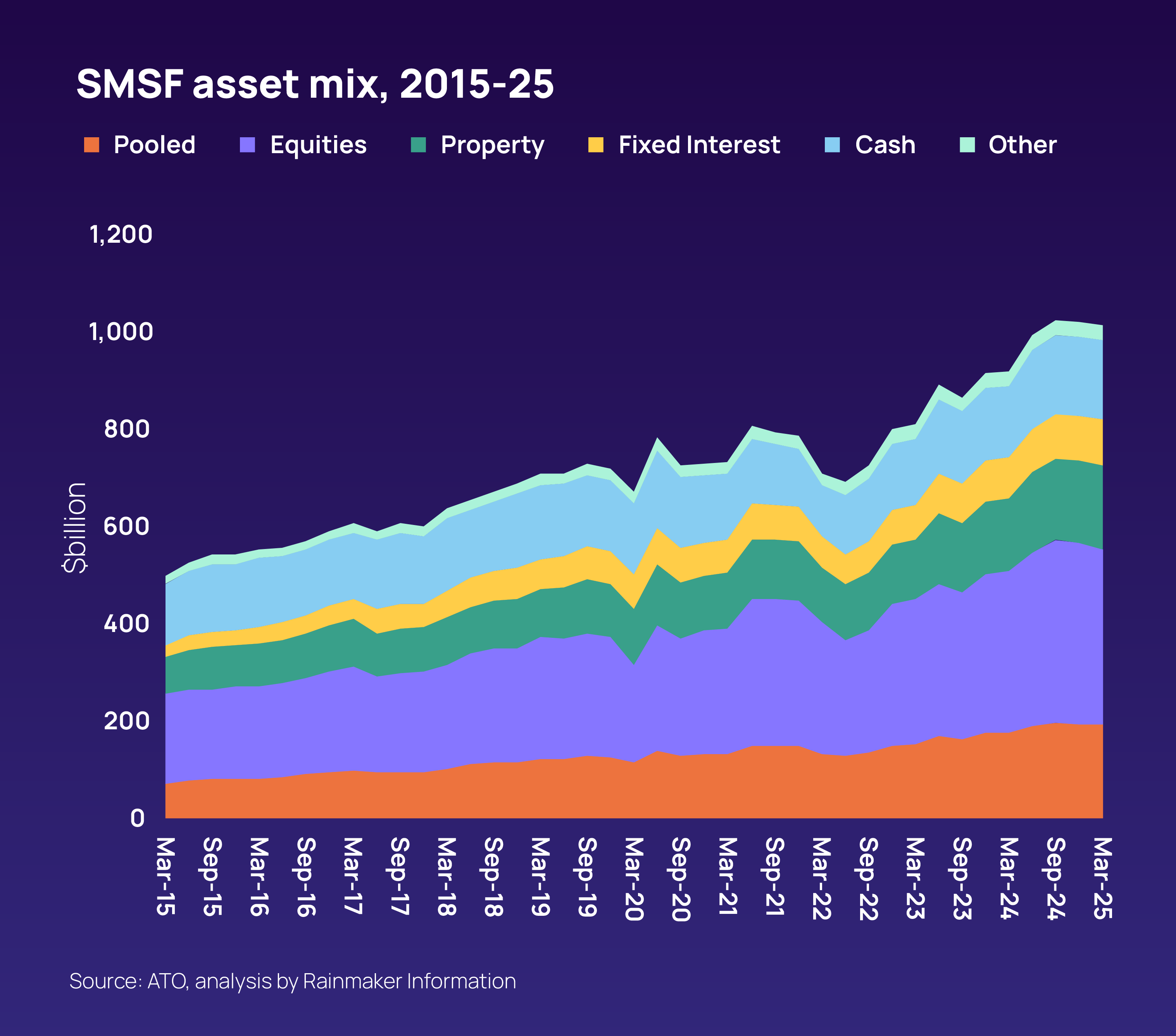
This is despite diminished fixed interest returns, with the Bloomberg Australia (5-7 year) index returning just 2.3% pa over 10 years to June 2025 and the Bloomberg Global Aggregate index returning 2.0% pa.
SMSFs have been repositioning their portfolios towards fixed interest and pooled investments, according to the Rainmaker Information Wholesale Advantage Report.
Pooled investments, being collective investment vehicles such as managed funds, life insurance policies or other types of collective trusts, have increased their allocation from 13% to 18%.
Pooled investments in SMSFs equates to approximately $192 billion, over a third of the size of the entire retail managed funds sector.
The allocation to cash among SMSF investors has plummeted.
In 2013 SMSFs held nearly one-third of their investments in cash, while in 2025 cash makes up just 16%.
SMSFs have shifted their asset allocations over the past decade for a variety of reasons, but in more recent times have shown an increasing tendency to increase exposures away from cash to include other assets offering higher returns and therefore better hedges against inflation,” said David Gallagher, executive director of research at Rainmaker Information.
“SMSFs over the past decade have also increasingly demonstrated their growing sophistication in executing their investment arrangements in an ever-competitive superannuation landscape."
While equities have the most fluctuation in terms of allocation changes year-on-year, the allocation of 36% in 2025 is sitting at almost the same level as it was in 2015.
Property has also stayed stable, currently sitting at 16% of all funds invested in SMSFs.

Overall SMSFs hold $1.0 trillion on behalf of 1.2 million members through 646,400 funds.
SMSFs are no longer experiencing the rapid growth that was once a feature of this segment.
Their rate of growth has slowed dramatically since the introduction of the Transfer Balance Cap in 2017.
In the eight years ending March 2025, their total assets had grown at 6.6% pa, about half the 13.2% pa rate of the not-for-profit super fund segment.
The number of SMSFs increased by 20,000 in 2024, an increase of 3.2%.
Retail super funds grew slower than SMSFs over eight years, rising just 4.7% pa, however, in 2024 their growth was 13.1%.
Contact our Business Development team to receive further details of Rainmaker's products and services.
Direct income protection premiums have dropped since 2024, with 30-day and 90-day waiting periods down 12% and 13%.
Exchange Traded Products with management fees above 0.65% pa face challenges attracting investors unless they offer a unique value proposition.